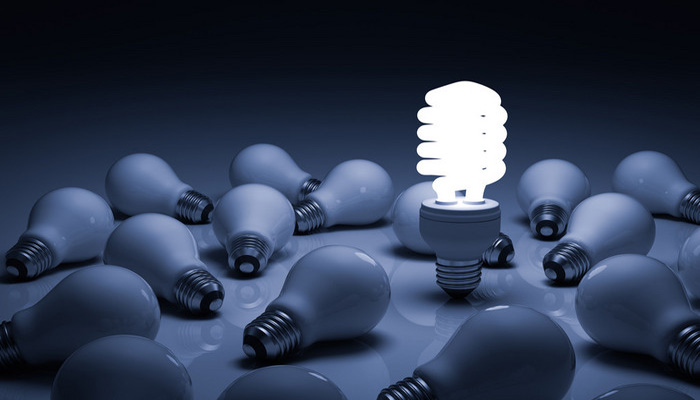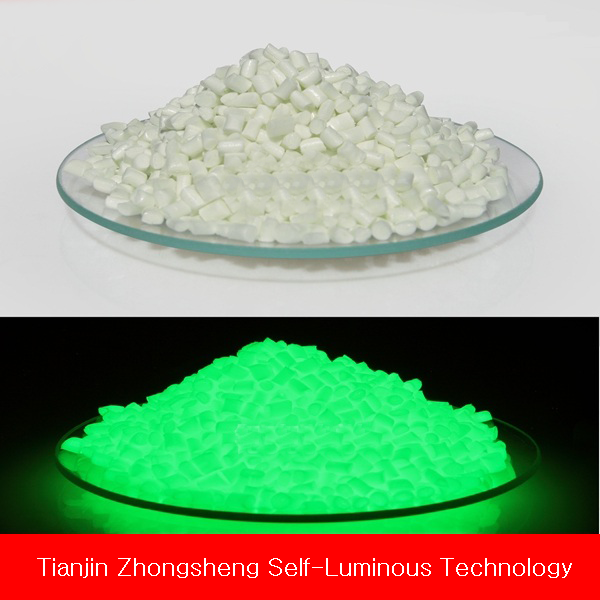phosphorescence
- General light energy Semi-permanent that absorbs light source (bright state) of all areas including sunlight and fluorescent light into energy and repeats absorption → accumulation → emission of light emitted by itself by converting light energy accumulated in dark places into visible light have a lifespan
- In recent years, excellent photoluminescent materials have been developed, so it can be used in various forms in the future. In particular, when applied to an underground space where natural light is blocked or the interior of a large building, it can provide emergency guidance in case of power outages and provide walking guidance when the power is turned off. have luminance.
phosphorescent pigment
- The luminescent pigment is an inorganic pigment and is a kind of luminescent pigment. It has the same basic properties as the phosphor, but unlike the phosphor, the energy caused by the previously received light energy is emitted again as light energy for a certain period of time even when the light is blocked.
- Compared with existing luminous materials, the luminance and afterglow time are significantly improved, and due to its strong durability, light absorption and emission occur continuously, and its performance does not deteriorate under any conditions. Energy sources that can be absorbed include natural light such as sunlight, mercury lamp, fluorescent lamp and incandescent lamp, and artificial light such as incandescent lamp.
- In terms of efficiency, it appears in the order of light containing a lot of white light in the order of the sun, mercury lamps, and fluorescent lamps. That is, light with high energy in the visible region, that is, light with many wavelengths in the vicinity of 400 nm, has a higher energy absorption rate.
- Photoluminescent pigments have a difference in luminous efficiency depending on the intensity of light. In other words, strong light such as sunlight is sufficiently absorbed in a short time, but it takes more time in a relatively weak incandescent lamp. .
Classification of phosphorescent pigments by physical properties
# Alkaline Aluminate
- As the main component is a mineral of Alkaline Aluminate, it is harmless to the human body, so it can be applied in a variety of fields, and its brightness is superior to that of the existing ZnS system.
- Because it is an extremely chemically stable crystal, it has excellent heat resistance and cold resistance, and the photoluminescence properties are preserved at high temperature (500°C or higher) and low temperature (-20°C or lower), and the luminescence and luminescence are semi-permanently preserved.
- Its luminous colors are yellow-green and purple.
- It can be applied to various fields such as coating, paint, plastic, ceramic, and glass.
# Silicate Aluminate
- The main ingredient is silicate aluminate, a kind of mineral, and it is harmless to the human body.
- It shows stability to normal chemicals, but due to the nature of the material, it can cause blackening when it comes in contact with iron and heavy metals.
- It is cheaper than Alkaline, and it is possible for products that require durability, but it is effective to apply it to fassion or decorative products.
- Emission colors are Blue, Blue-Green, Green, and Yellow.
- It can be used for various purposes, but it is necessary to select and use a product of an appropriate grade.
Difference between fluorescence, luminescence, and phosphorescence
I would like to explain the difference between fluorescence and luminescence (luminescence).
A lot of people are confused about this part... ^^;;
Fluorescence refers to a substance that emits light when stimulated by light.
In the case of luminescence, light is stored for a while, and the accumulated light energy emits light in a dark, dark state. To put it more simply, the fluorescent pen or fluorescent color paper we see around us looks brightly luminous in bright conditions...
And when you see luminous stickers or luminous emergency exit signs, things that emit light in the dark... Would it be easier to explain like this?
Fluorescent lamp
luminous sea
luminous sheet
Once again, the difference between fluorescence and luminous light has been easily answered by an intellectual, so I'll move it...
Fluorescence - a phenomenon in which a substance emits light when stimulated by light.
It has a different color tone from the reflected or transmitted color of the material and generally has a longer wavelength than the irradiated light.
For example, the green color seen in red ink observed under sunlight and the whey color of kerosene
In particular, when a light containing a lot of ultraviolet light is used, many materials exhibit some degree of fluorescence.
Fluorescent lamps use fluorescence (visible light) generated by the stimulation of ultraviolet rays generated inside the tube.
In addition to light, X-rays, radiation, and cathode rays also cause fluorescence. Even if the irradiation light is removed when irradiating light
In many cases, the continuous emission is called phosphorescence, and the one that disappears immediately when the irradiated light is removed is called fluorescence.
Phosphorescence is often seen in solids, but fluorescence is often seen in liquids or gases. Phosphorescence usually occurs when the temperature is lowered.
Although the brightness decreases, the fluorescence does not change, but rather increases.summary
The difference is that fluorescence is a phenomenon in which a material *lights up* when stimulated by light.
If you paint with a highlighter, you can see it even if it's not dark.
However, a luminous bracelet is invisible when there is no light, unlike a luminous bracelet, which is invisible when there is no light. This is the difference. 



